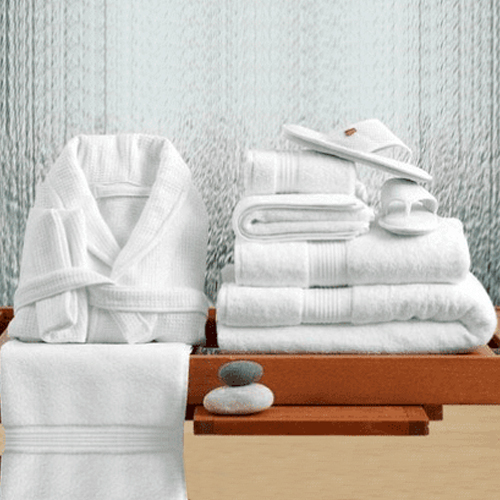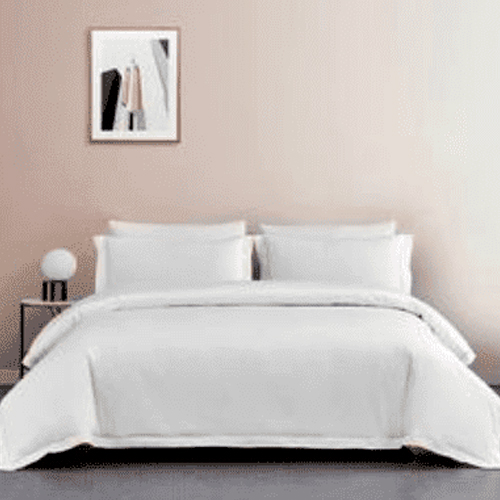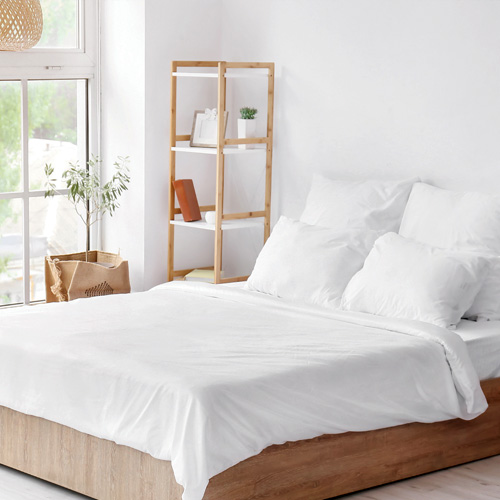A good night’s sleep starts with fresh, quality linens. We all deserve that extra touch of luxury in our lives, and it begins with the little details, like the bed and bath linen we choose. You need to maintain your linens so that you ensure they stay as comfy and durable as the day you brought them home. Let’s explore how to make sure your linens remain fresh and last longer.
How to Select Quality Bed and Bath Linen?
It involves various factors to select quality bed and bath linen. You need to ensure comfort, durability, and overall satisfaction. Here are some tips to help you choose the best bed and bath linens:
Bed Linen
Look for high-quality cotton, such as Egyptian or Pima cotton. These types of cotton are known for their softness and durability. Linen is breathable and becomes softer over time. It’s a good choice for warm climates. Sateen or Percale are types of weaves for cotton sheets. Sateen is smooth and silky, while percale is crisp and cool. A higher thread count doesn’t always mean better quality, but a range of 300-600 is generally considered suitable for cotton sheets. It’s a balance between softness and breathability.
Sateen weaves provide a smoother and shinier surface, while percale weaves offer a crisp and matte finish. Choose based on your preference. Single-ply fabrics are generally softer and more durable than multi-ply. Look for single-ply sheets for better quality. Ensure that the sheets fit your mattress properly. Deep pockets are important for thicker mattresses.
Bath Linen
Egyptian or Turkish Cotton is known for its absorbency and softness. Bamboo or Microfiber are known for their quick-drying properties. Towel weight is measured in grams per square meter (GSM). Higher GSM indicates a thicker and more absorbent towel. Look for a range between 400-600 GSM for a good balance. Pay attention to the towel’s construction. Double-turned edges and double stitching contribute to durability.
Consider the size of the towels, including bath towels, hand towels, and washcloths. Ensure they are practical for your needs. Choose towels that are highly absorbent. Cotton towels are generally preferred for their absorbency. Softness is crucial for comfort. Wash the towels before use, as this can improve their softness.
General Tips
- Read customer reviews from bed linen websites to get insights into the quality and durability of the linens you’re considering.
- Follow the care instructions provided by the manufacturer to maintain the quality of your linens.
- If possible, feel the fabric before purchasing to assess its softness and comfort.
- Consider reputable brands known for producing high-quality bed and bath linens.
When you pay attention to these factors, it helps you make informed decisions when selecting bed and bath linens that suit your preferences and needs.
How to Keep Your Bed and Bath Linen Fresh and Durable?
Keeping your bed and bath linen fresh and durable requires regular care and proper maintenance. Here are some tips to help you maintain the quality of your linens:
For Bed Linens
- Bed linens should be washed regularly, ideally every one to two weeks.
- Follow the care instructions on the labels to avoid damaging the fabric.
- Wash light and dark-colored linens separately to prevent color bleeding.
- Use cold water since it is gentler on fabrics than hot water, and it helps retain the colors and prevent shrinkage.
- Use a mild, eco-friendly detergent to avoid harsh chemicals that can damage fibers.
- Don’t overload the washing machine. Overloading can lead to inadequate cleaning and increased wear and tear.
- Tumble dry on low heat or, preferably, line dry to preserve fabric quality.
- Remove linens from the dryer promptly to prevent wrinkles.
- Store linens in a cool, dry place. Avoid damp areas to prevent mold and mildew.
For Bath Linens
- After each use, hang bath towels to dry. This prevents the growth of bacteria and maintains freshness.
- Wash bath towels separately from clothing to avoid lint transfer.
- Fabric softeners can reduce the absorbency of towels. Instead, use vinegar occasionally to remove detergent residue and restore absorbency.
- Periodically, wash bath linens with hot water and a cup of white vinegar to remove built-up detergent and bacteria.
- Towels have a lifespan. Replace them when they become frayed, thin, or lose their absorbency.
General Tips
- Have multiple sets of bed and bath linens to rotate, reducing wear on each set.
- Prolonged exposure to direct sunlight can fade colors. Dry linens in the shade or indoors.
- If ironing is necessary, follow the recommended settings for the fabric and iron with care.
- Treat stains promptly to avoid them setting in. Follow care instructions for stain removal.
- Consider professional cleaning for delicate or intricate linens.
Frequently Asked Questions
What is the difference between bedding and bed linen?
Bedding and bed linen are related terms, but they refer to different components of the items used on a bed. Bedding is a broader term encompassing all the elements on a bed, including pillows, blankets, comforters, and sheets. Bed linen, on the other hand, specifically refers to the sheets and pillowcases that cover the mattress and pillows.
What is the most popular bed linen?
The best quality bed linen often depends on personal preferences. However, Egyptian cotton is widely regarded as one of the top choices, known for its long fibers. Egyptian cotton produces soft, durable, and luxurious sheets. Pima cotton and linen are also considered high-quality options, each offering unique characteristics.
Why is bed linen so expensive?
Bed linen can be expensive due to various factors, such as the use of premium materials like high-thread-count cotton or linen, intricate weaves, and renowned brand names. They all contribute to enhanced comfort, durability, and overall quality. In essence, the cost of bed linen often reflects skilled craftsmanship and the overall brand and design elements associated with the product.
How much does it cost to get bed linen?
The cost of bed linen can vary. It depends on factors such as material, brand, thread count, and design. Affordable bed linen sets may start around $50. On the other hand, high-end or designer options can range from a few hundred to several thousand dollars. On average, consumers can find quality bed linen sets in the $100 to $300 price range. However, prices may differ based on preferences and specific brand choices.
Conclusion
If you follow the tips we have provided, you can ensure that your bed and bath linen remain fresh, durable, and comfortable for an extended period. Regular care will also help preserve the aesthetic appeal of your linens.
Are you looking for stylish bed and bath linen? If yes, then enjoy the perks of the Thanksgiving Deal from Beyond Bridges USA. Get affordable bed and bath linen at your doorstep.








